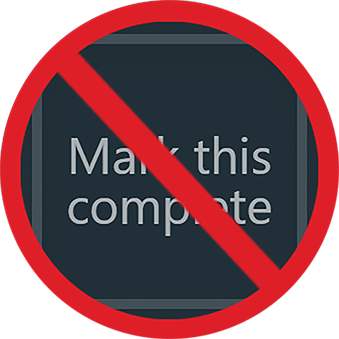
We have a recurring issue with well-meaning team members marking their own Basecamp tasks as “done” when they’re not. Once marked complete, we assume no further action is required—meaning any incomplete work gets buried unless someone takes the time to manually audit what’s been “done.”
This completely defeats the purpose of task management and introduces major risk to our workflow. That’s why, over 20 years ago, we instituted a firm rule: only managers are allowed to mark tasks as complete.
Why It’s Such a Problem
When someone prematurely marks a task as done—especially without attaching proof of work—several things can go wrong:
- Assets may be unintentionally discarded or forgotten.
- Valuable content can be lost—along with the client’s effort and our editing time.
- Work meant for ads or deliverables may never get used.
- Quality issues go unnoticed without a final review.
- Managers lose visibility into whether tasks are truly complete.
This is not just an inconvenience—it’s vandalism of our content and workflow, even when accidental. That’s why this rule exists.
Only Proven Contributors Earn Autonomy
While the default rule is that anyone below Level 4 cannot mark their own tasks complete, we recognize that some team members consistently demonstrate such a high level of reliability, initiative, and attention to detail that they’ve earned the ability to work more autonomously.
These individuals don’t require babysitting. Their work is consistently clean, their content doesn’t need QA, and they’ve shown they can publish without compromising quality or process. They’ve gained this privilege not by requesting exceptions—but by consistently exceeding expectations and leading by example.
Some people are a breath of fresh air. They get things done right the first time and don’t need chasing or corrections.
A Guideline, Not a Loophole
Let’s be clear: this isn’t a shortcut or a free pass. The rule still stands for the majority of team members. The ability to mark your own tasks complete is earned through demonstrated performance, not granted by default.
If you were referred to this article because you marked your own task complete, please revisit the Level 1 Virtual Assistant Course. It’s designed to help you understand how our workflows operate—and how to grow as a dependable contributor.
Also, take a moment to read: This Is Why Virtual Assistants on Our Team Shouldn’t Message Me Directly to avoid another common pitfall.
Let’s all strive to be the kind of team member who sets the standard—not one who cuts corners.
